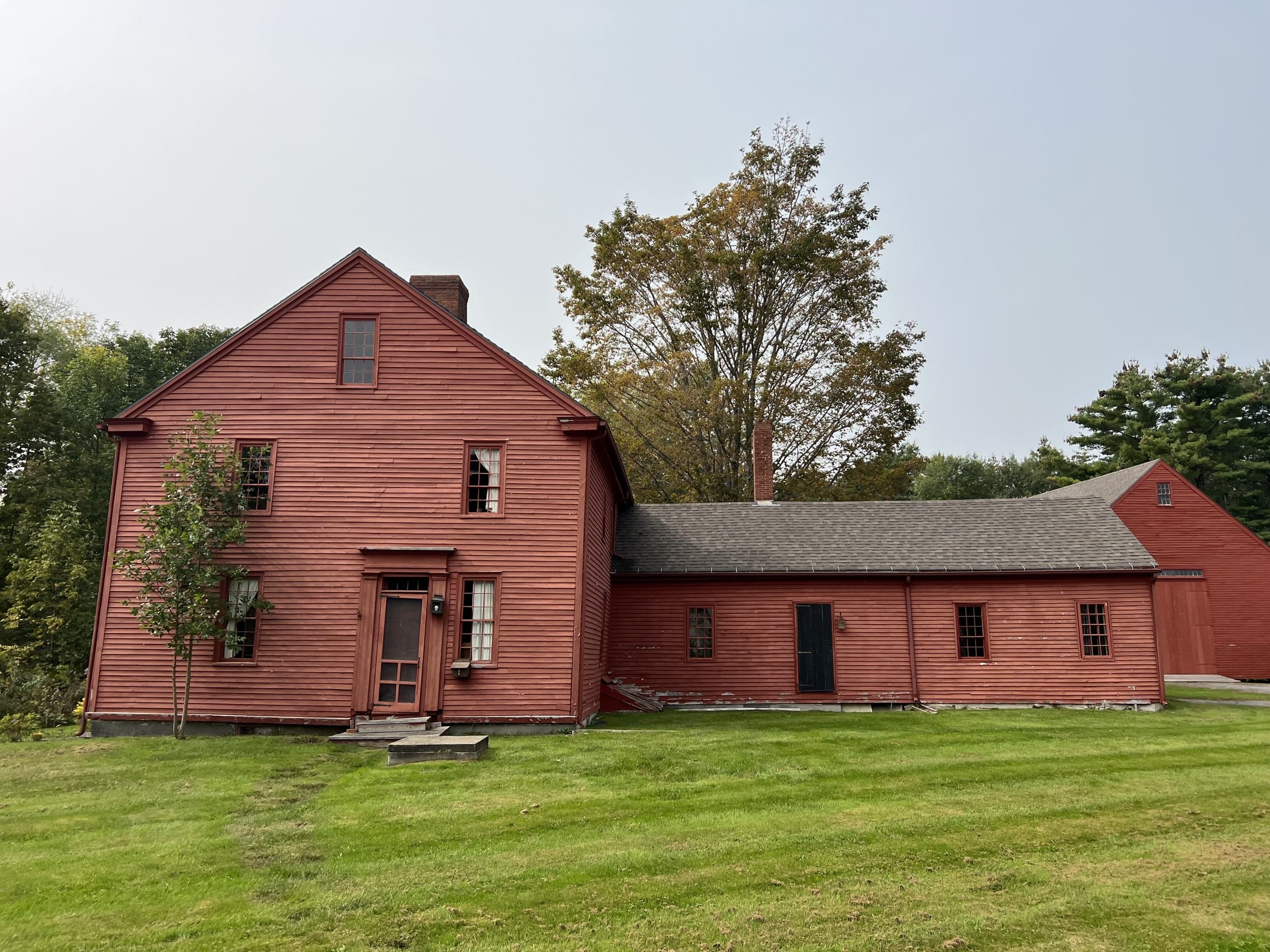
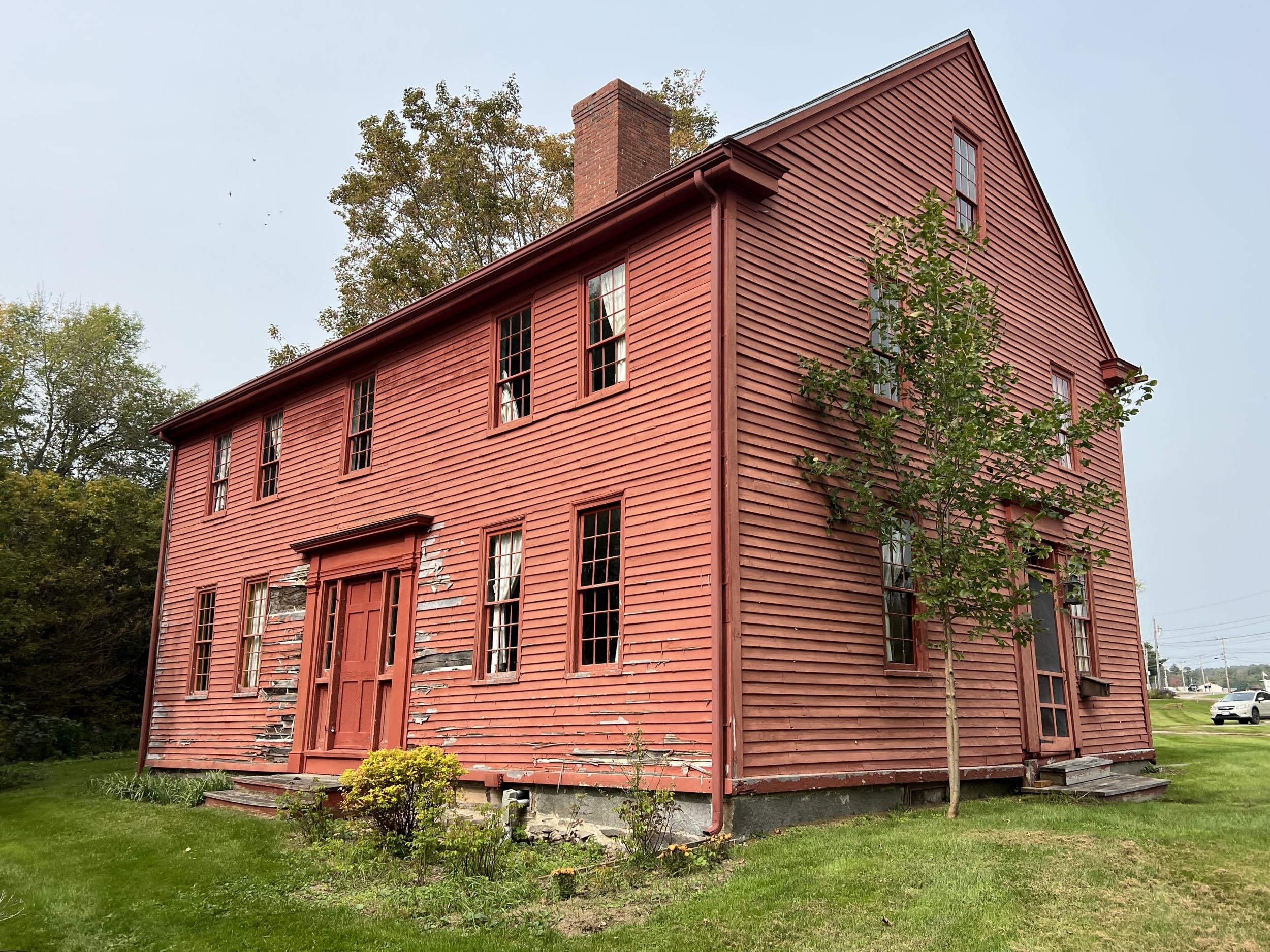
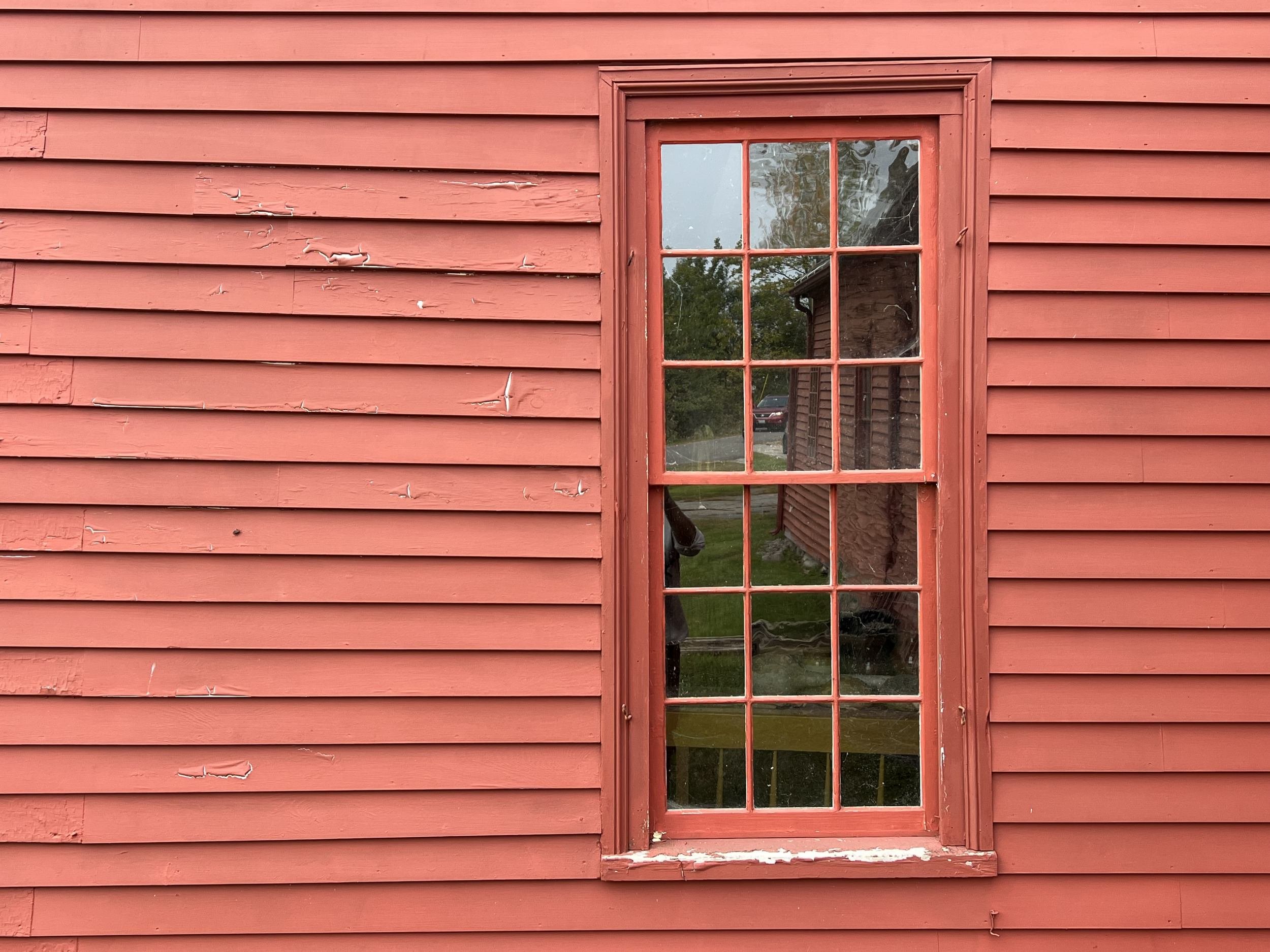
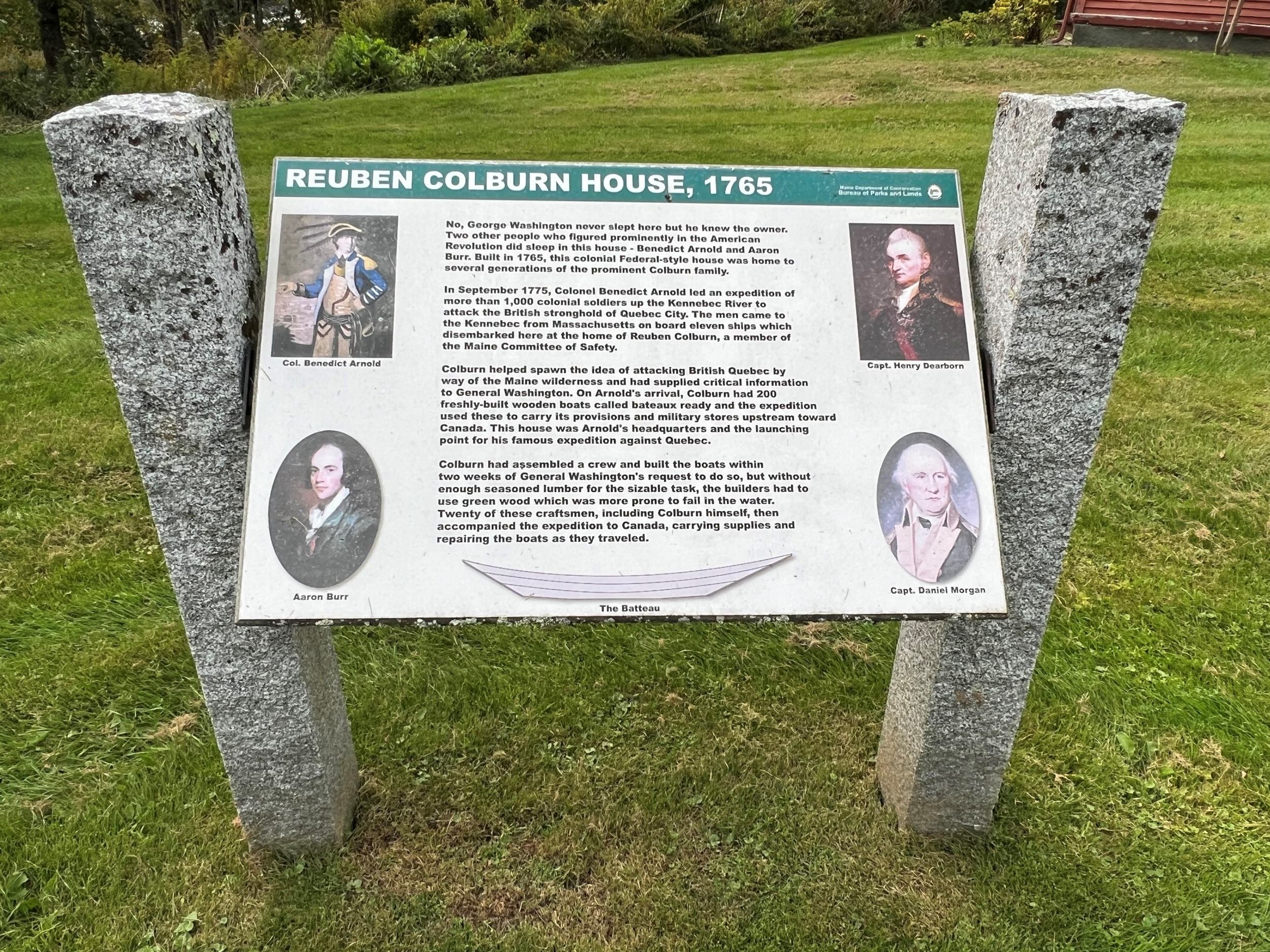
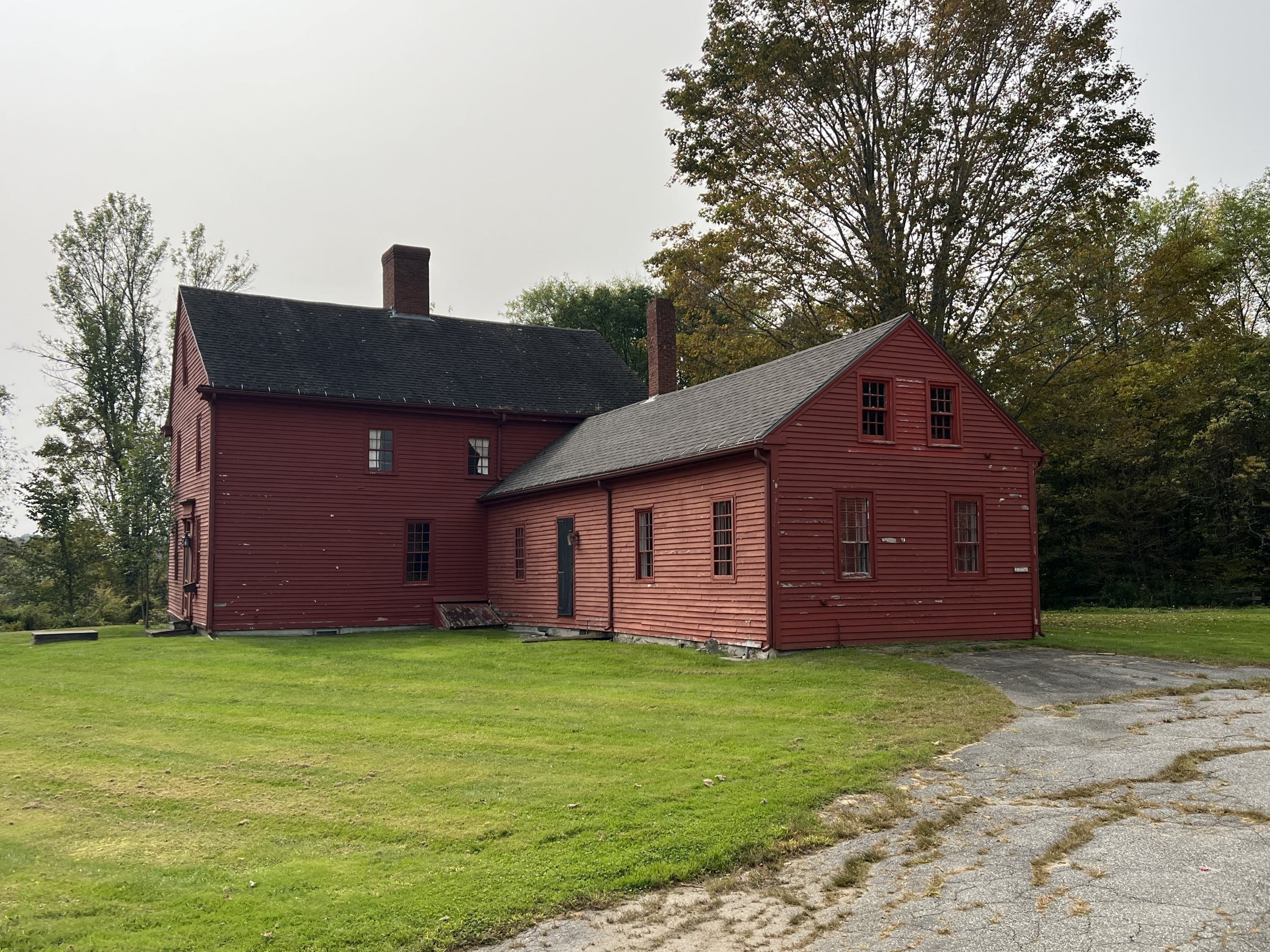
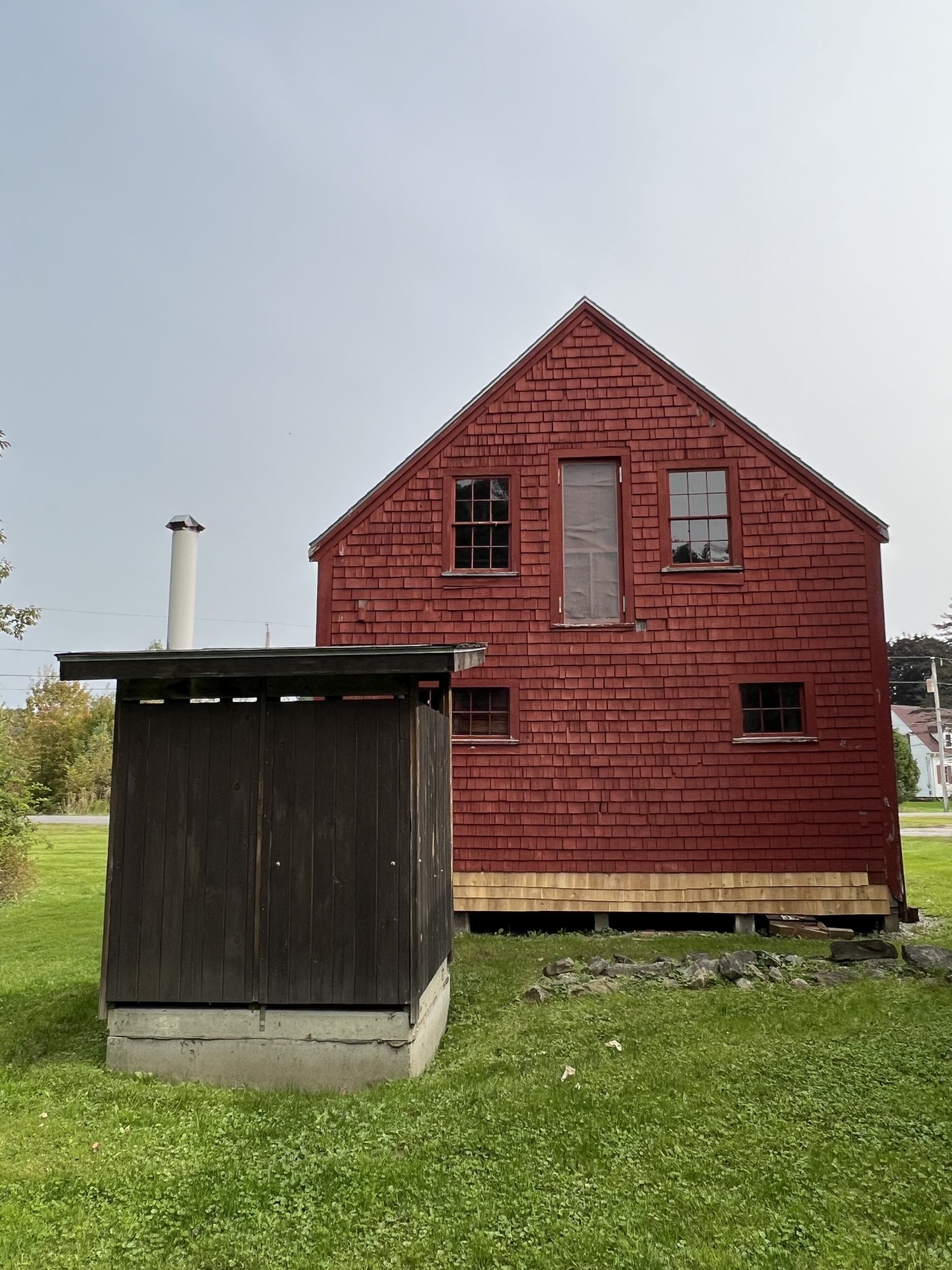
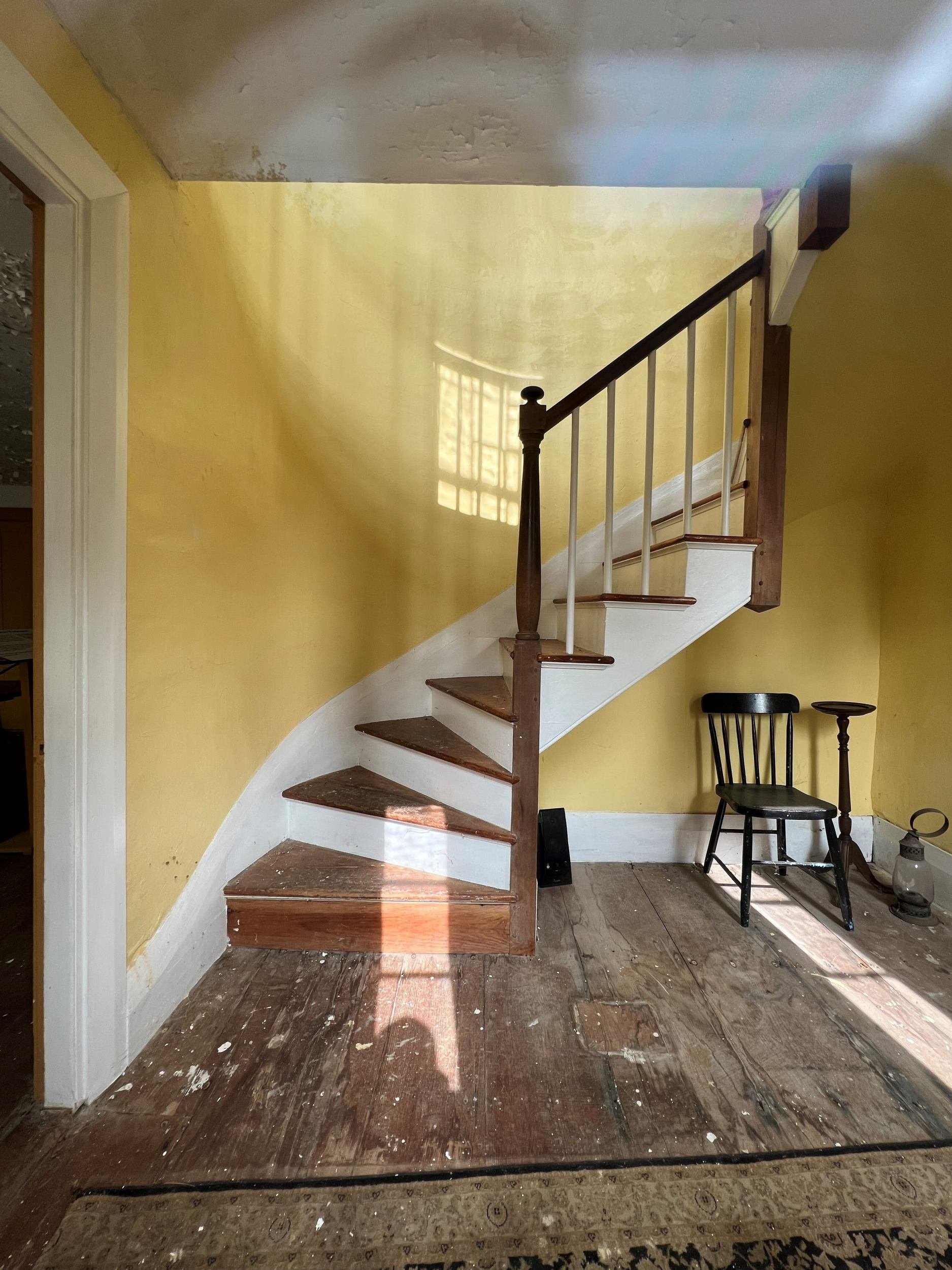
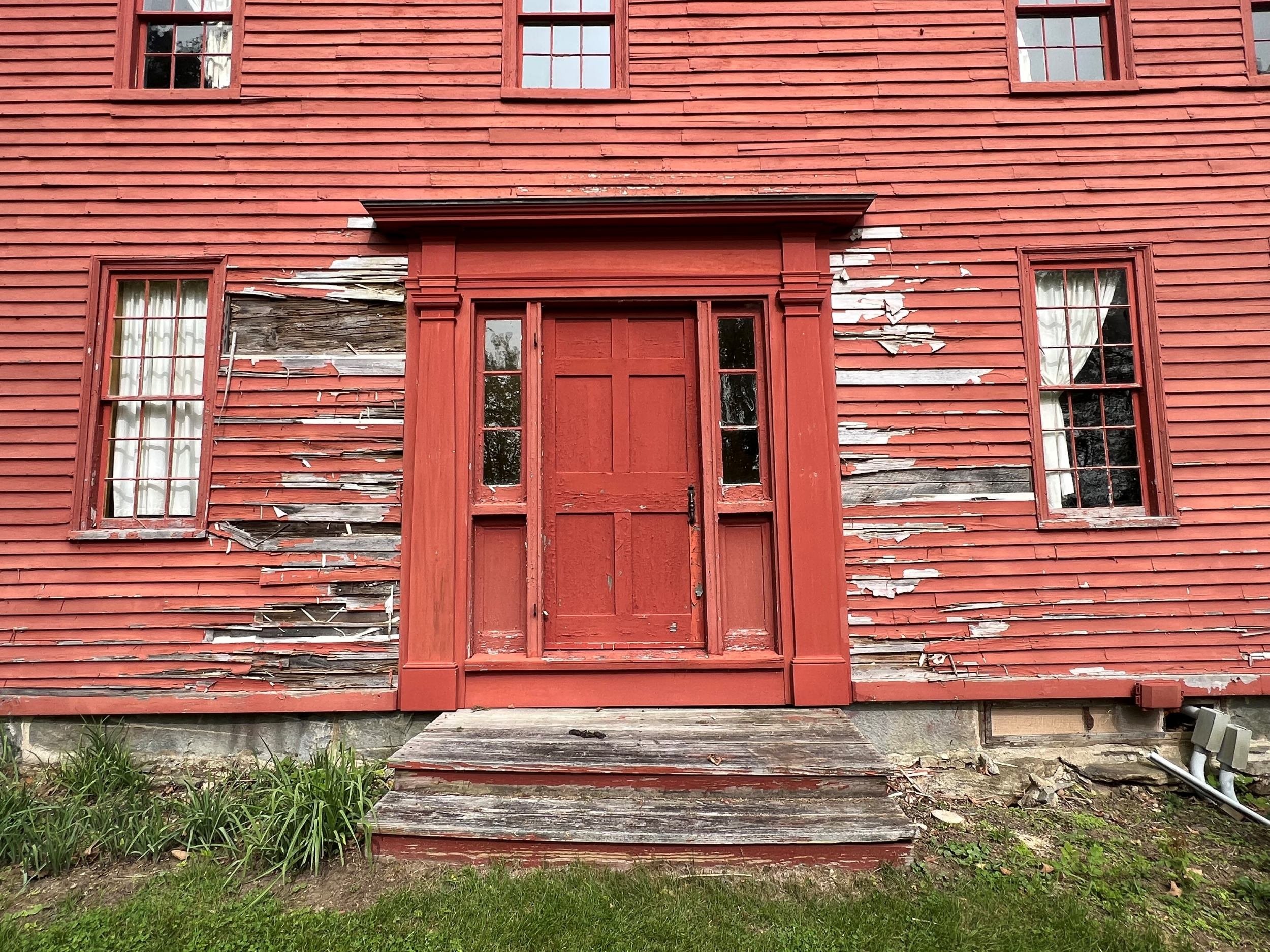
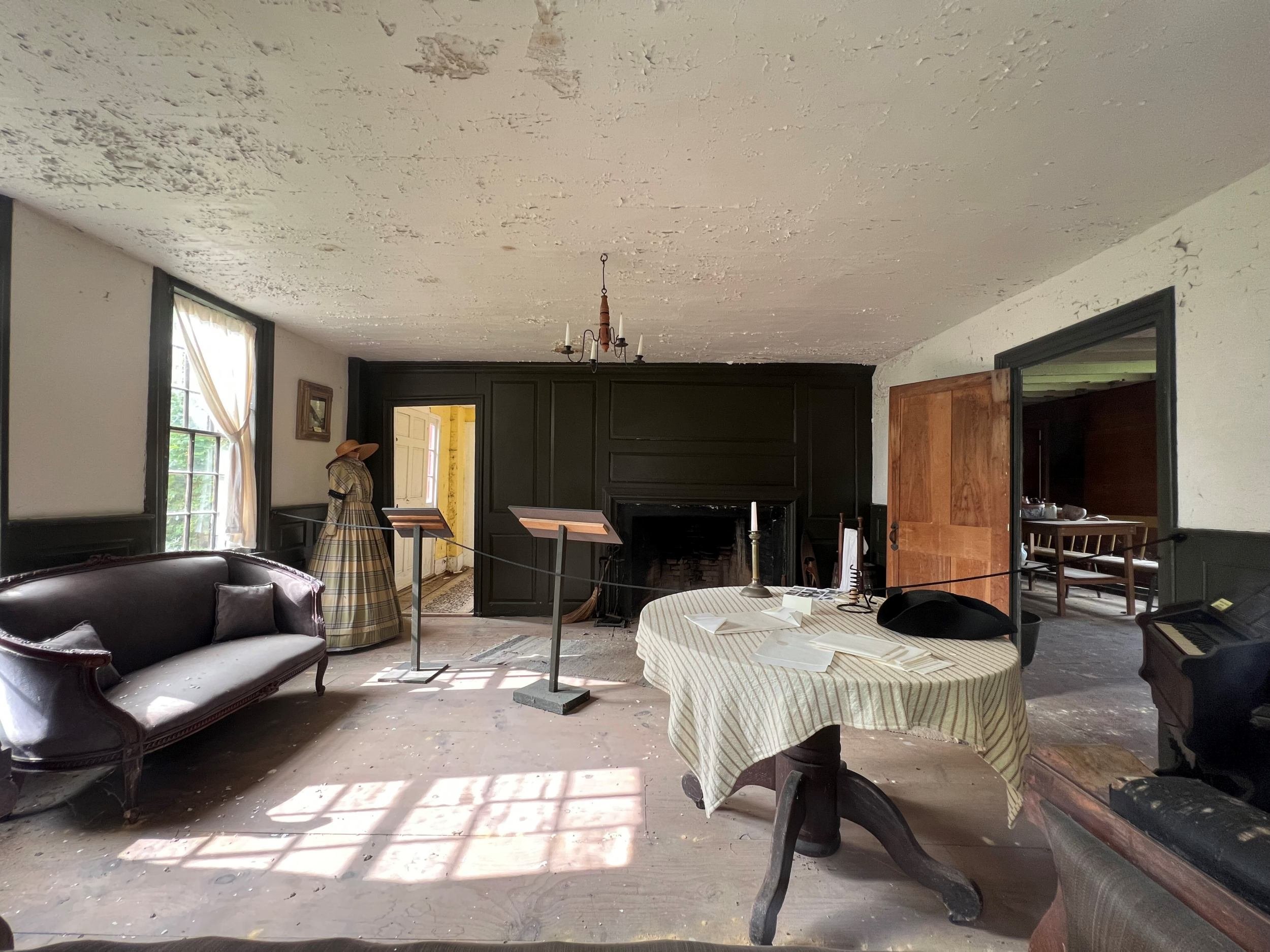
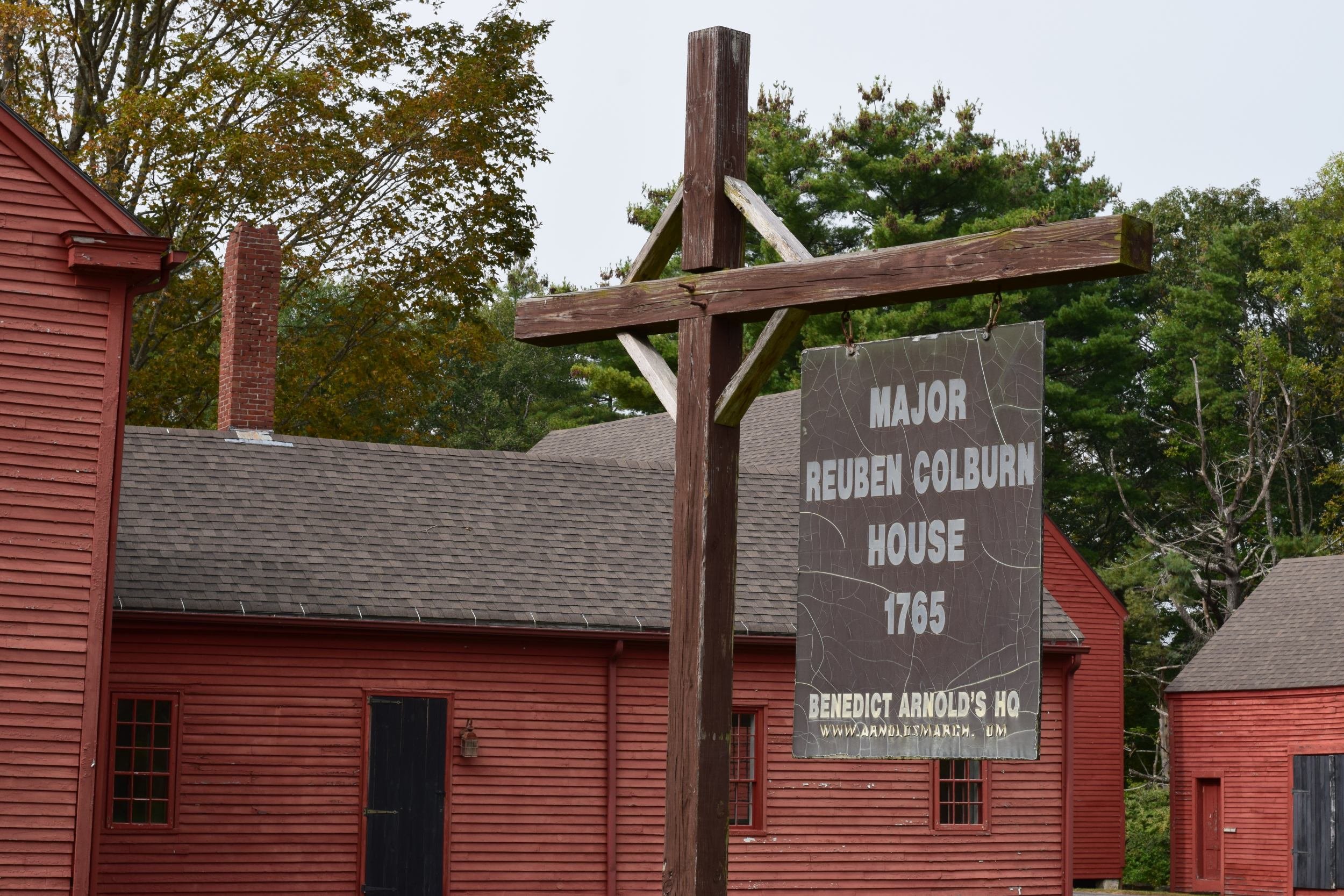
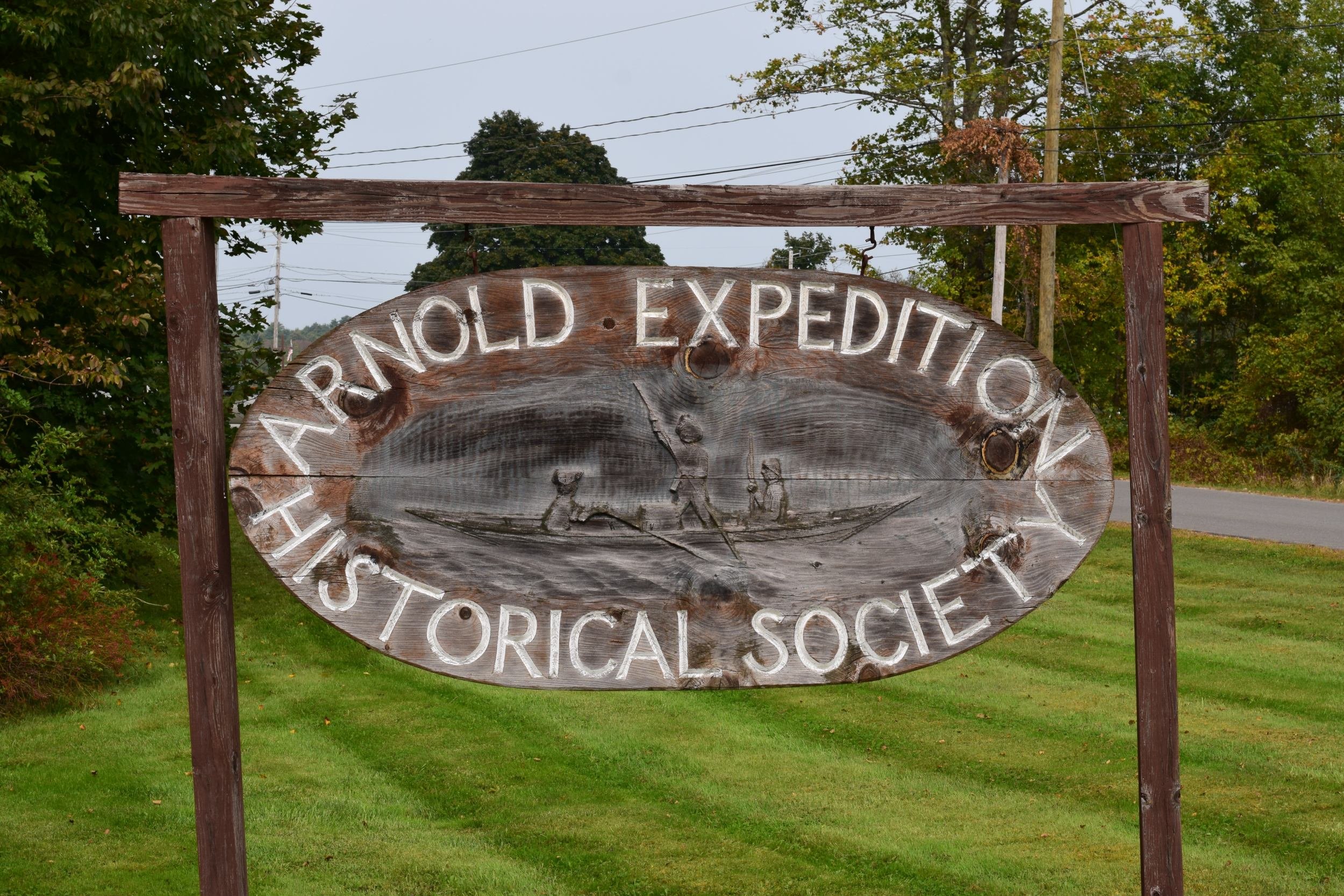
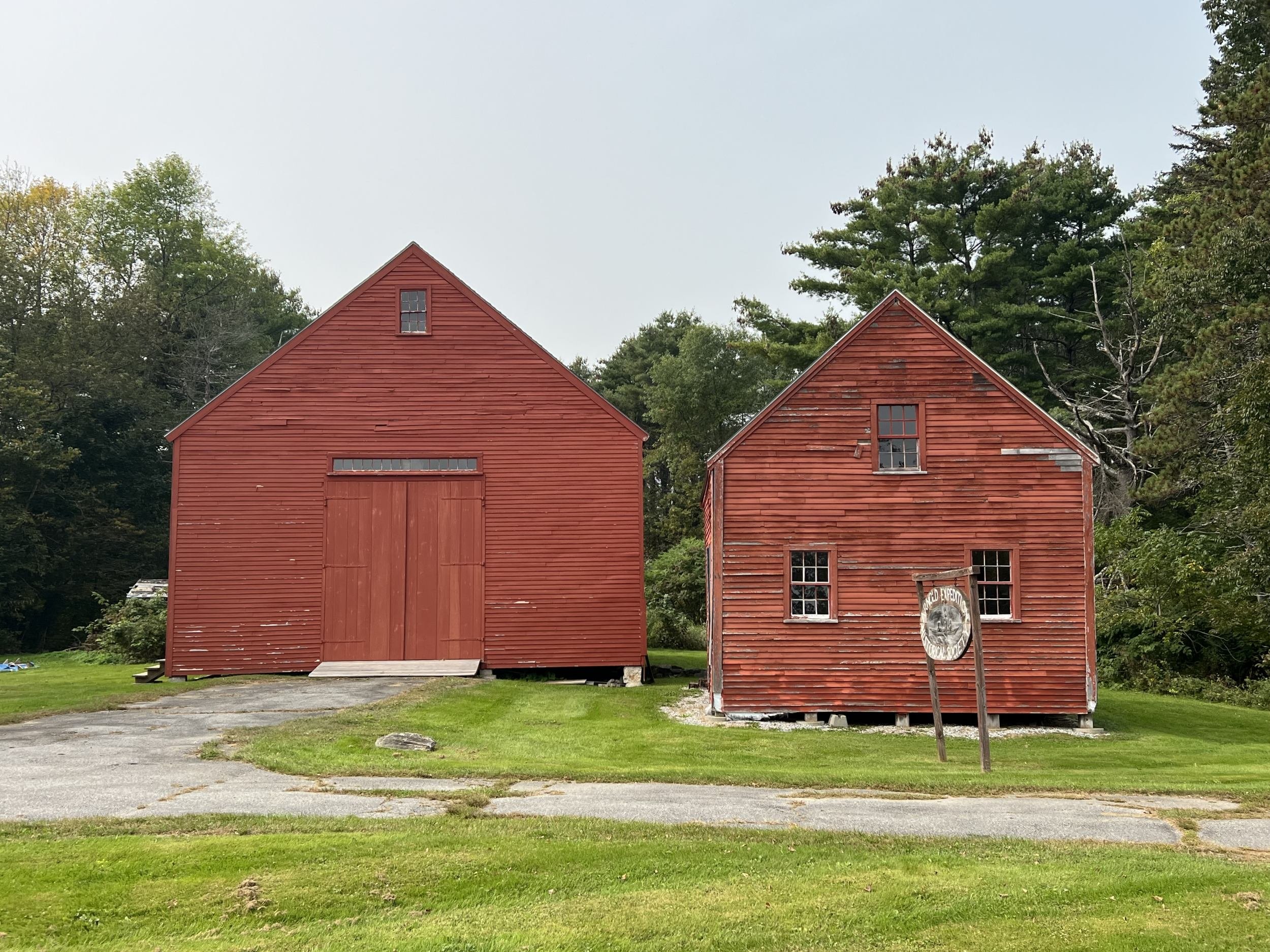
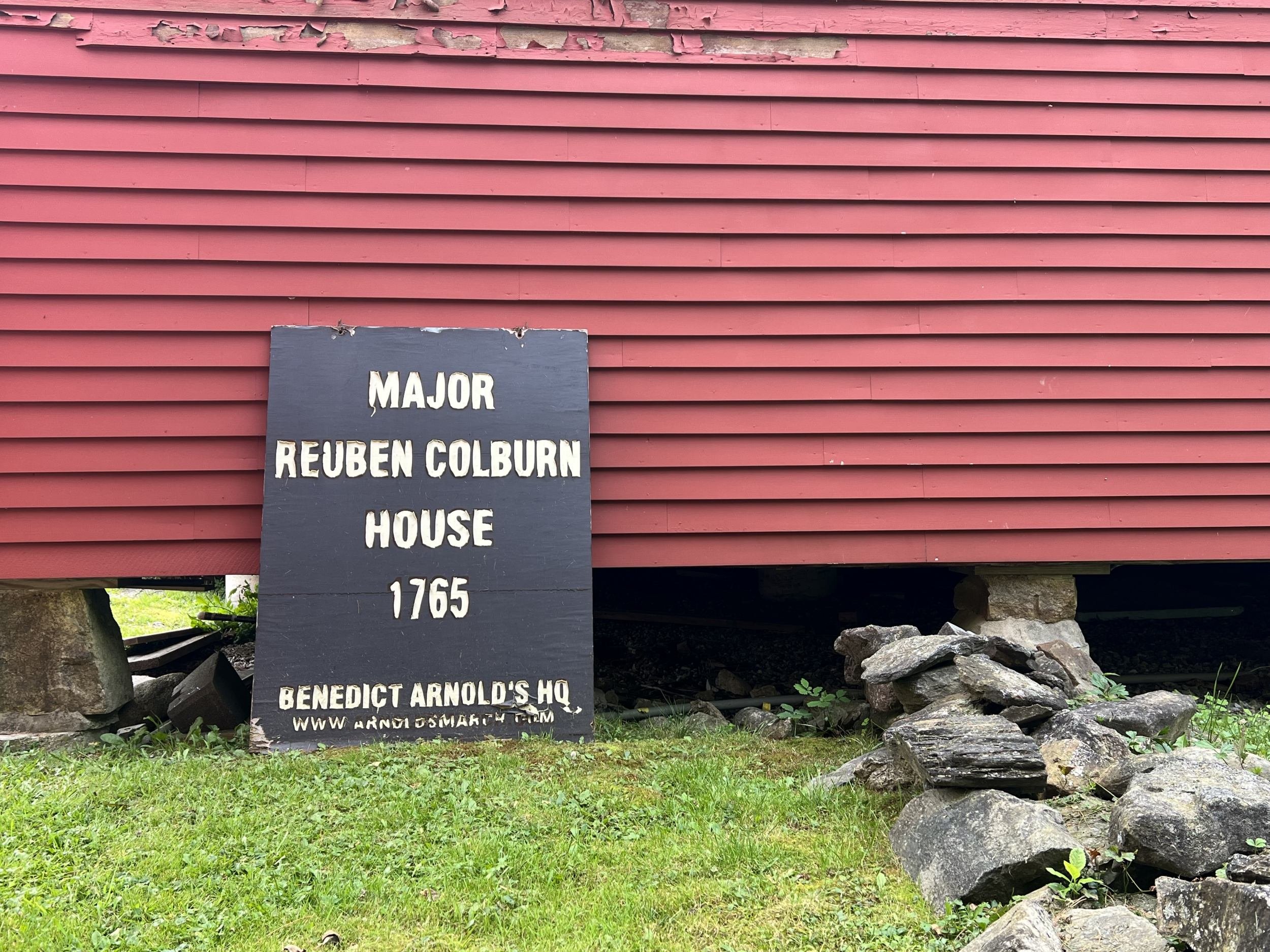
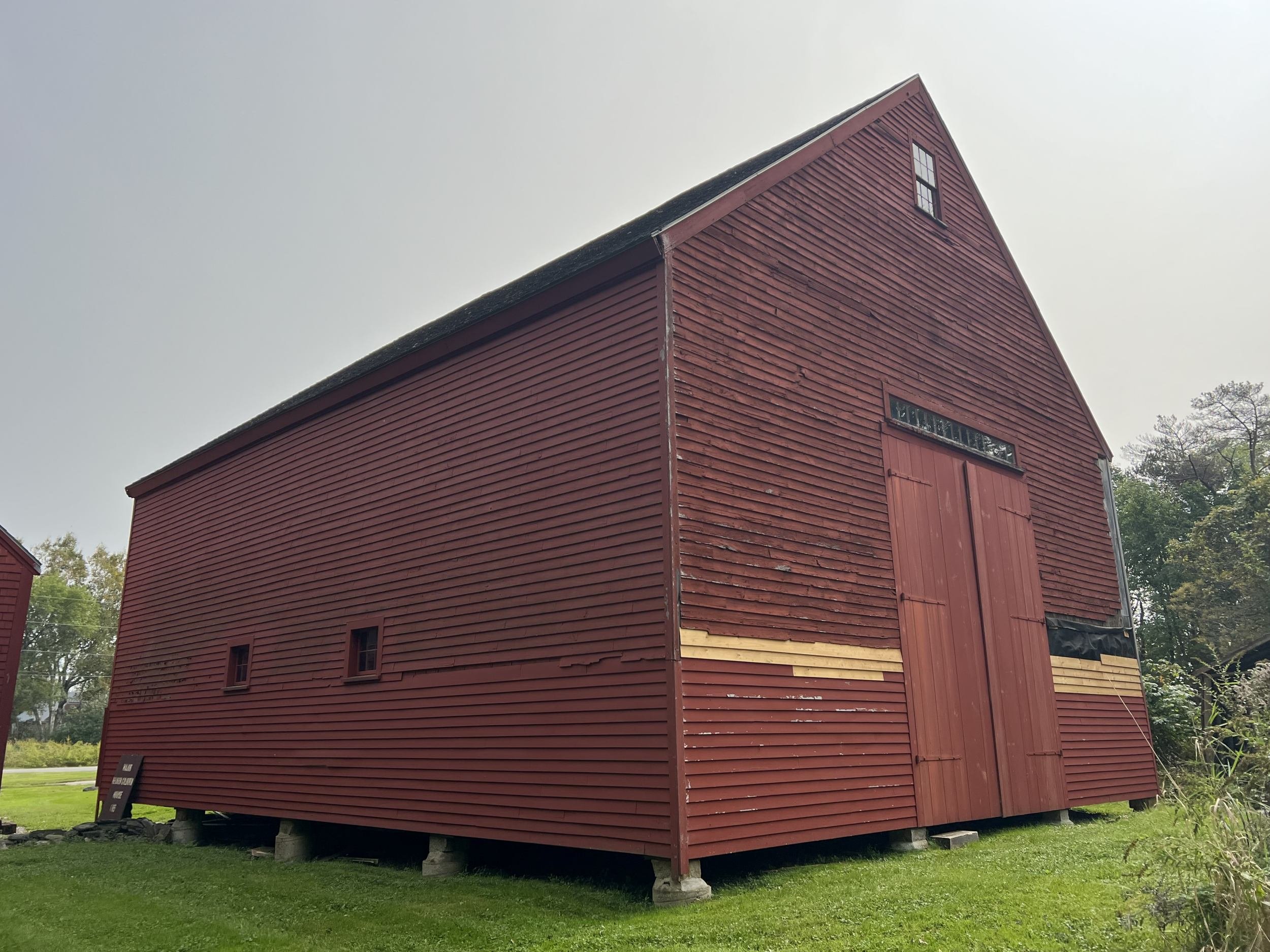
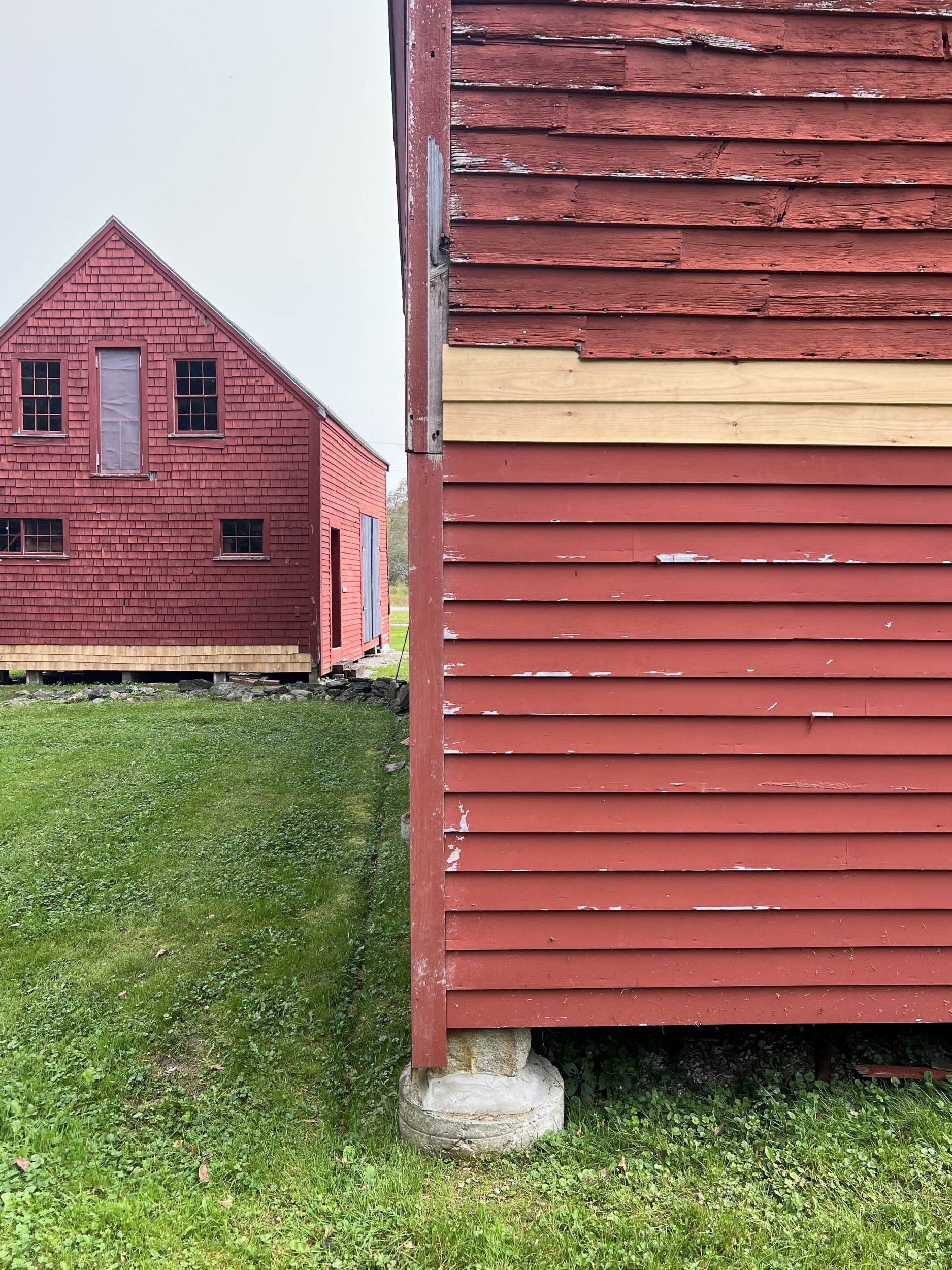
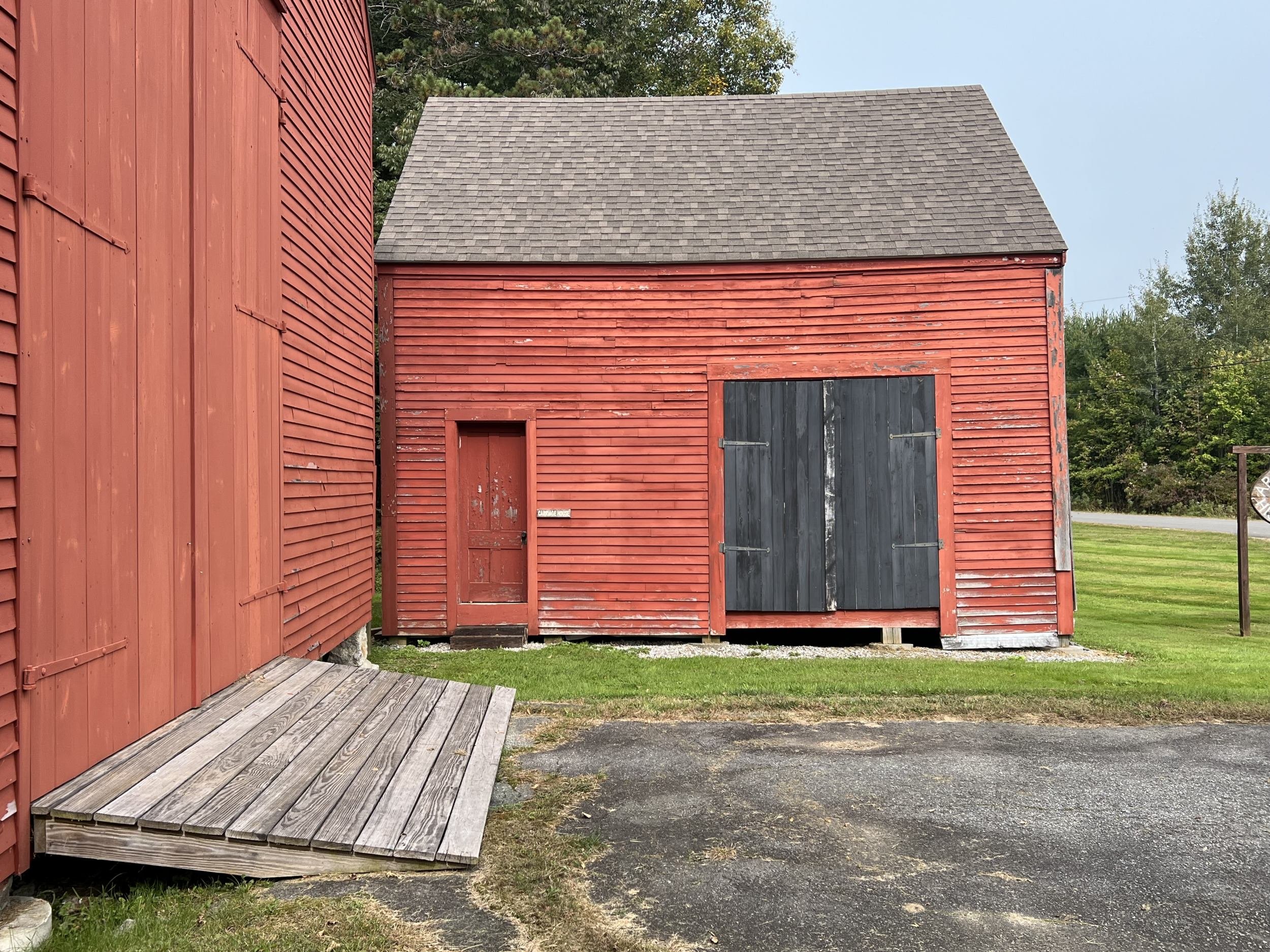

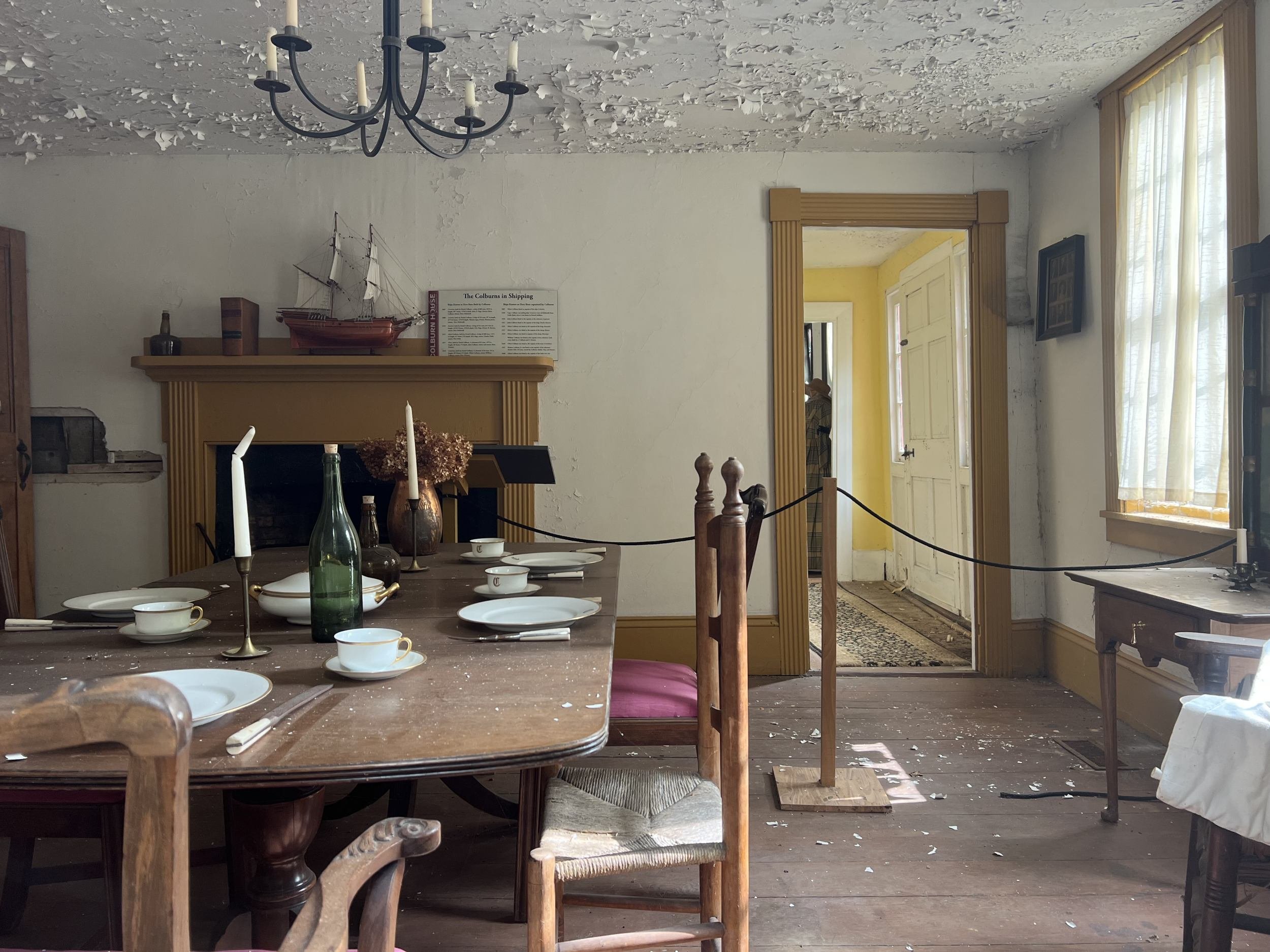
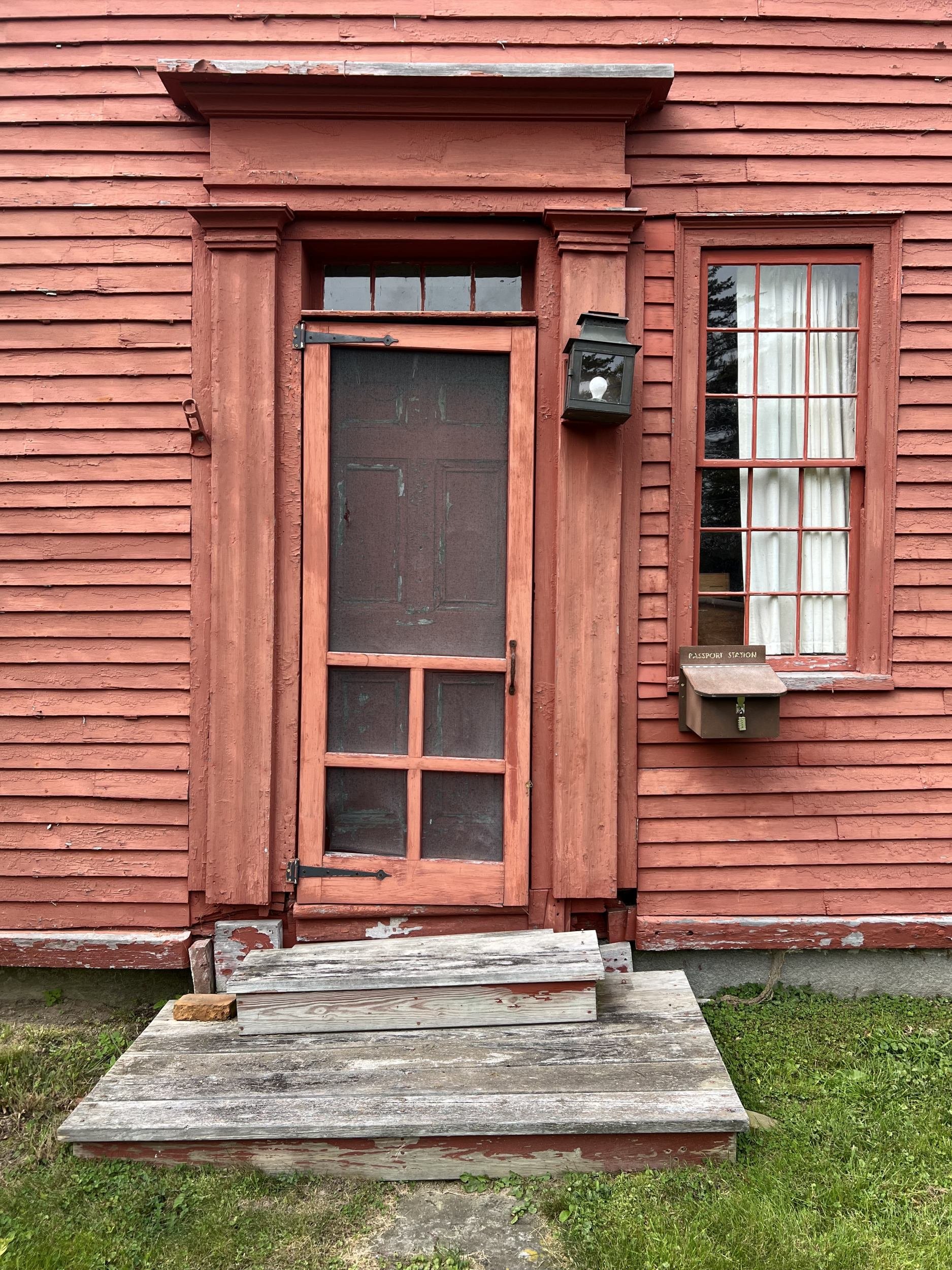
Story
The timber framed Georgian-era house was built in 1765 by early Pittston colonist Major Reuben Colburn. Colburn was responsible for the construction of an early sawmill, brickyard, boat yard, and gristmill integral to European settlement of the area. His most pivotal role was in helping plan and supply an attempt to seize control of Quebec from the British in the early stages of the Revolutionary War.
Colburn met General George Washington and Colonel Benedict Arnold, coordinated a scouting party of colonists and native Wabanaki people to develop a route from the Kennebec River to Quebec, and then, in a spectacular feat spanning two weeks, led the construction of 200 batteaux (small boats) just south of the house and secured provisions for 1,100 troops. Arnold’s expedition ultimately failed, but successfully disrupted the British preparations in what would be the Battles of Saratoga. Colburn was never paid for his efforts in outfitting the expedition force and contributions to the eventual success of American independence. It would take a lifetime of hard work for Colburn and his family to overcome the debt. His descendants retained ownership of the property for more than a century.
The State of Maine purchased the property in 1972 and it is now operated by the Bureau of Parks and Lands (BPL) as the Colburn House State Historic Site. The property is individually listed in the National Register of Historic Places (2004), and as a contributing building within the Arnold Trail to Quebec Historic District (1969). The house museum tells the story of the Arnold expedition and Major Colburn’s central role in the “March to Quebec.” The state has long partnered with the Arnold Expedition Historical Society (AEHS), a nonprofit organization established in 1973 to preserve and interpret the expedition. AEHS operated the site through a lease from BPL, but that has since lapsed. The organization remains dedicated to preservation of the site and hopes that interpretive programming and use could be enhanced so as to better tell this nationally significant story. AEHS hosted a volunteer workday in the summer of 2023 to cut back vegetation and repair cedar siding and steps.
The last repair campaign, totaling $200,000 was completed in 2015, addressing structural and exterior cladding repairs on the house, carriage house, and barn. The repairs were possible through state bond financing, support from AEHS, donations, and labor provided by the Kennebec County Sheriff’s Office. Unfortunately, significant repairs are still needed. In partnership with the Maine Historic Preservation Commission (MHPC), BPL developed a Historic Structures Assessment that identifies the building’s condition, describing and prioritizing needed repairs, but these plans come at a significant cost.
Threat
The house’s future is threatened by structural degradation, water infiltration and drainage, and powder post beetles. The combination of constrained budgets and well-intentioned but piecemeal repairs have compounded to a dire situation. Unsafe conditions, including an unstable foundation, mold growth, and flaking lead paint led the state to end public access to the interior in 2019.
The good news is the National Park Service awarded a $500,000 grant to BPL in 2022 through its Semiquincentennial Grant Program, which celebrates the 250th anniversary of the country’s founding. The grant did not require matching funds, but the state planned to use American Rescue Plan Act (ARPA) resources to bolster the grant-funded work, only later discovering that historic preservation activities were not eligible. According to David Rodrigues, BPL’s Director of Real Property Management, the funds will only address the most critical repairs to the foundation and the house’s timber frame structure. Exterior carpentry repairs to windows, doors, and siding; reroofing; painting; mold remediation; life safety; and accessibility improvements will likely need to wait, which means it will remain unfinished and closed to the public.
How to Get Involved
The Colburn House is among many other state-owned historic properties suffering from deferred maintenance and attention due to an estimated $100 million backlog across all BPL properties. The Maine Legislature will consider LD 791, “An Act to Support the Maintenance, Preservation and Promotion of Historic Sites” during the January 2024 session, which would allocate $1 million in each of the next two fiscal years to support the 16+ historic sites managed by BPL. The bill was introduced in 2023 by Senator Nicole Grohoski to fund preservation needs at Fort George in Castine, which as included on our 2022 Most Endangered Historic Places List. Repairs to the Colburn House are near the top of BPL’s priority list, so please contact your State Representative and Senator to let them know you support much needed repairs to the Colburn House and that the state should adequately fund and steward the historic properties under its care. The potential state funds from LD 791 would only just begin to support desperately needed preservation work, but it is a move in the right direction.
To learn more about the “March to Quebec” and the work of the Arnold Expedition Historical Society, please visit their website: www.arnoldsmarch.org.

